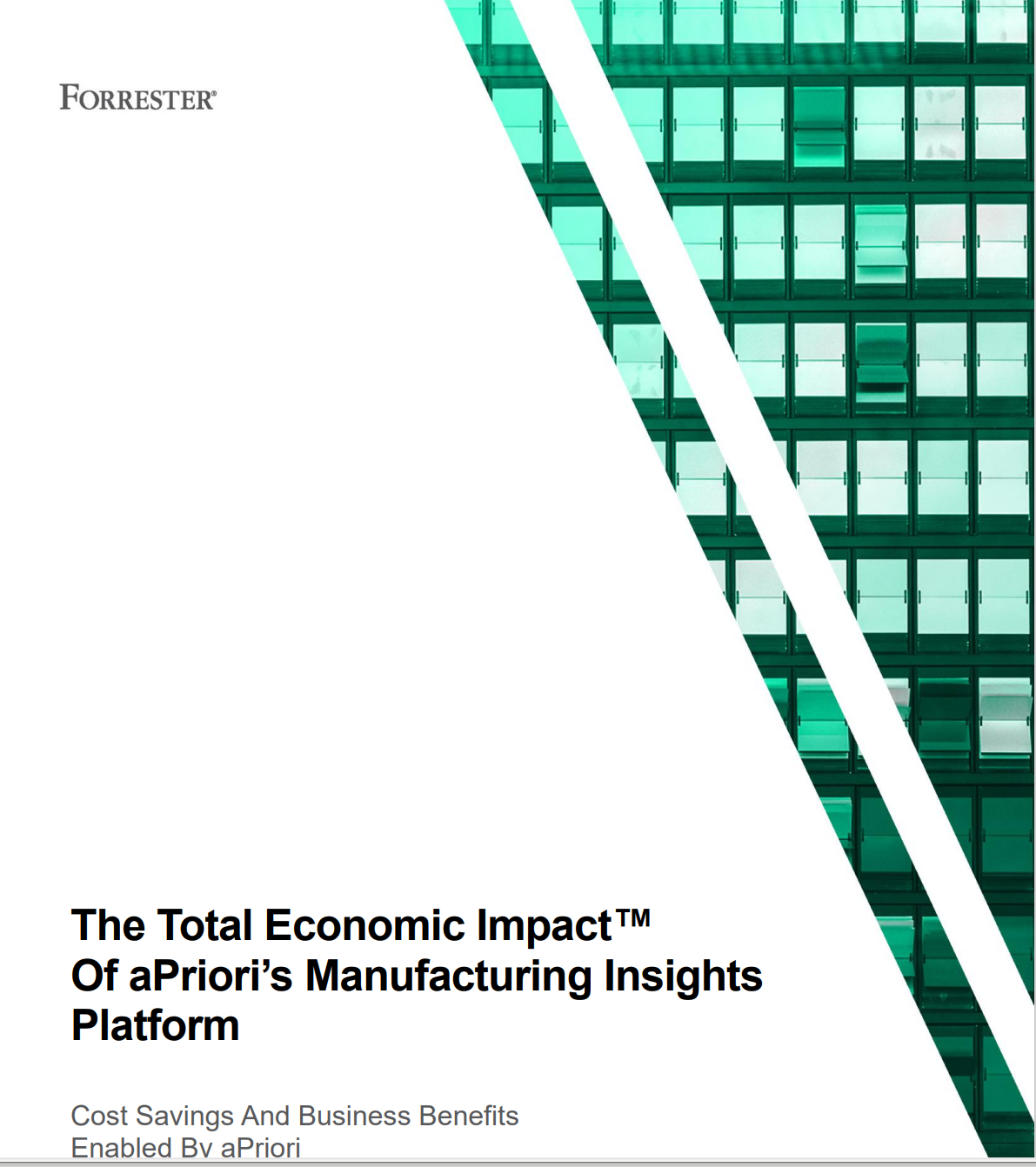The EU Manufacturing Paradox: Why Small Gains Add Up to Big Failures
Key Takeaways:
- Innovative manufacturers are using digitalization as a fulcrum for growth amid market complexity and volatility
- Manufacturers hoping to survive without fundamental changes may face a permanent disadvantage
The Full Article:
Manufacturers across the European Union (EU) continue to struggle amid geopolitical tensions and economic soft patches. Expect this trend to continue as the International Monetary Fund (IMF) and others project uneven growth across Europe in 2024 due to nagging inflation, high interest rates, and other headwinds.
Today’s market dynamics are markedly different from economic turbulence caused by COVID-19, the Eurozone debt crisis, etc. – and require a new strategy to navigate this current storm. A key reason is that a growing number of manufacturers now operate at new levels of speed, efficiency, and agility thanks to Industry 4.0/digital transformation (DX) capabilities.
To realize these gains, manufacturers need to make systemic changes to their operations. This requires IT investment, strong executive leadership for the company to adopt new ideas, and more. But manufacturers focusing on incremental gains instead of meaningful change risk falling behind their competitors or worse (such as contributing to the EU’s spike in bankruptcies).
Our 2024 EU Manufacturing Outlook spotlights key European manufacturing challenges this year and beyond – along with strategies and case studies to address each of the following:
- The Manufacturing Tipping Point: Are You on the Path to Evolution or Extinction?
- Chart a Path for Industry 4.0 Transformation Success
- Apply Speed for a Competitive Advantage
- Unlock New Areas of Cost Savings
- Address Risk Proactively
- Activate the Next Phase of Your Sustainability Strategy
1. The Manufacturing Tipping Point: Are You on the Path to Evolution or Extinction?
There’s a growing list of high-flying manufacturers that quickly collapsed. The paradox is their success fostered an unfounded belief that they could make incremental gains indefinitely. (Think of executives focusing on incremental gains at the expense of reshaping the organization to address emerging threats). In many cases, their risk-averse strategies actually accelerated their demise.
The BlackBerry OS captured one-third of the UK mobile operating system market in 2011 before losing nearly 31% of its UK market share in five short years, according to Statista. Apple’s iPhone and other smartphone innovations caught the company off guard. And it never recovered.
Kodak was once a leader in consumer and commercial film equipment, materials, and chemicals. In the mid-1970s, Kodak executives rebuffed plans to advance their fledgling digital camera technology. Instead, other companies commercialized digital photography successfully while Kodak refocused on niche commercial printing and retreated from other markets to remain viable.
By contrast, Canon continues to maintain a high level of success despite experiencing the same seismic shift in the film and camera industries as Kodak. Canon has applied its core optical technology and imagery expertise as a roadmap to diversify its applications beyond photography, including: factory automation, semiconductor development (high-resolution lithography), medical devices (diagnostic imaging, etc.), video security, and more. To put this in a financial perspective, Canon’s market cap is 9,590% larger than Kodak, according to CompaniesMarketCap.
When StrategicRISK Magazine examined why Kodak and other market leaders failed to adapt, it cited the “failure to innovate” and “failure to recognize disruption” as the primary reasons.
Risk management expert Chris Corless also exposes a “me first” mindset in the article that can create roadblocks to important changes. “In Kodak’s case, management was betting that digital photography would not overtake traditional photography during their tenure. If you have a couple of people that take that bet, all of a sudden you haven’t got time to make the switch you need to make.”
CEOs across the globe are feeling pressure to adapt their organizations. In fact, 45% of CEOs don’t believe their companies will be viable in a decade if they continue on their current path. That’s according to more than 4,700 responses for PwC’s 27th Global CEO Survey.
What’s pushing this shift? CEOs expect the following dynamics will have a pronounced change on their business during the next three years than they had during the past five years:
- Customer preferences
- Competitors’ actions
- Government regulation
- Climate change
Internal efficiencies – or lack thereof – also weigh on CEOs. According to the PwC survey, CEOs believe regular activities such as procurement/contracting processes, information-sharing meetings, and emails are inefficient approximately 40% of the time.
Manufacturers rife with inefficiencies will be hard-pressed to address the myriad issues that threaten their viability. The following sections outline pivotal factors in gaining new levels of competitiveness.
2. Chart a Path for Industry 4.0 Transformation Success
Strategic planning is central to unlocking value from digital transformation efforts. According to Deloitte, specific combinations of digital transformation actions can yield up to a 5% increase in market capitalization. By comparison, other combinations can cause value erosion risks of as much as 9%.
In short, technology aligned with strategy has a 2X positive impact compared to siloed efforts. When aligned with defined business goals, DX can serve as the engine to drive manufacturers to the next step in their business maturity and to reimagine their business models. (Get the latest definitions and examples of digital twins and the digital thread.)
Effective digitalization solutions enable manufacturing industry leaders to rethink entire processes, provide real-time guidance to make improvements, and provide the data required to make decisions quickly and confidently. To help achieve their goals, companies are using manufacturing insights to:
- Gain Insights and Automation Across the Product Development Lifecycle: Manufacturers are implementing the digital twin concept to simulate the entire product manufacturing process. By connecting product designs, production processes, and factory digital twins (smart factories), manufacturers can gain visibility across the product development lifecycle. This includes running “what-if” scenarios for product designs, manufacturing processes, and individual factories or production regions.
- Strengthen Existing IT Investments: Product lifecycle management (PLM) systems are the central hub for product design data and processes. Companies can expand the depth of PLM data to include cost, sustainability, weight, and other information with digital manufacturing insights. Manufacturers can also connect their ERP systems to manufacturing insights applications to standardize cost and other information.
3. Apply Speed for a Competitive Advantage
Is speed a significant competitive advantage for industrial manufacturers? According to Accenture, the answer is a resounding yes. The firm surveyed 1,200 global manufacturing experts and classified the companies into three categories – “Speedsters,” “Accelerators,” and “Starters” – regarding their Industry 4.0/advanced manufacturing maturity. Accenture found that Speedsters are outperforming Starters across multiple dimensions.
Specifically, Speedsters’ CAGR revenue from 2016 to 2021 was 18% higher than that of Starters. At the same time, Speedsters demonstrated 10% higher profitability than Starters in 2021. The Speedsters’ advantage is mainly attributed to adopting new technologies for next-generation innovation including cloud computing, big data, artificial intelligence (AI), automation/robotics, and the Internet of Things (IoT).
As an example, KONE, a global elevator and escalator provider, wanted to increase efficiency amid growing supply chain complexity. Using digital twin and agile design methodologies, KONE has dramatically reduced lead times for should cost estimate work. Within one year of pivoting to this new strategy, KONE reduced lead times by 25%. And it further accelerated lead times by a cumulative 75% in its second year.
4. Unlock New Areas of Cost Savings
Who’s responsible for cost at your organization? Successful models empower all product manufacturing teams to share responsibility for cost (and sustainability and manufacturability). This approach requires centralized access to trusted data, the ability to collaborate in real-time, and automation to streamline the process.
One key area where manufacturers can find cost savings is by establishing a “central source of truth” for product data using digital thread capabilities. This approach ensures a single, reliable source of information, enabling product development teams to make informed decisions by connecting performance and manufacturing data across different applications. This model also eliminates departmental silos and connects teams from design and cost engineering to sourcing, procurement, and sustainability.
A manufacturing insights platform also enables manufacturers to conduct automated analysis at scale (bulk costing) to identify cost outliers based on a variety of properties (e.g., material or compound type). After identifying potential cost outliners, teams can use manufacturing insights to establish should cost models to compare current component costs against quotes based on direct and indirect expenses across multiple production regions. This capability is instrumental in making quick, confident decisions regarding cost, sustainability, supply chain risk, and more.
5. Address Risk Proactively
Maintaining a diverse supplier base and reducing reliance on specific regions helps to mitigate geopolitical risks, natural disasters, and other disruptions. One tool that can help manufacturers with this is aPriori’s Regional Data Libraries (RDLs). These digital libraries provide real-world and timely variable material and supplier production costs across 87 global regions — from China to European Commission ecosystem countries including France, Germany, Italy, the Netherlands, Spain, etc.
With aPriori, manufacturers can identify the most relevant suppliers in specific geographic areas. Manufacturers can digitally recreate their suppliers’ factories to better understand costs and CO2e associated with cycle time, materials, etc. This visibility is essential to sourcing competitively, particularly for organizations expanding their supplier reach geographically. Those creating new products will also need this visibility to identify if and where suppliers exist to provide components or other services.
Innovators can also assess manufacturing alternatives effectively, consider the impact of region-specific tariffs, and avoid an overreliance on specific regions with potential risks. This often leads to significant cost savings and reduced lead times.
6. Activate the Next Phase of Your Sustainability Strategy
An EY survey of chief sustainability officers found that progress on sustainability initiatives is slowing “as early phases focused on low-hanging fruit come to an end.” The findings also revealed that more companies delayed their self-imposed sustainability targets during the past two years from a median goal date of 2036 to 2050.
But 2026 is a critical date because that’s EU policymakers’ sustainability initiatives will go into full force – including reporting mandates and the EU’s “carbon tax.” The EU Carbon Border Adjustment Mechanism (CBAM) could increase some material import costs by 30% in January 2026.
Scope 3 (supply chain) sustainability reporting is also coming in 2026. Mandatory reporting will include the EU’s Corporate Sustainability Reporting Directive (CSRD) along with the US state of California, which is projected to become the world’s fourth-largest economy based on GDP. (Some suggest that California’s financial projections come from a Hollywood creative team, not fastidious accounting. Regardless, California’s sustainability regulatory requirements will reverberate globally.)
To reduce global warming, manufacturers require the capabilities to incorporate sustainability into their operations while simultaneously evaluating product development cost, manufacturability, and performance trade-offs.
aPriori integrates data from ecoinvent, a leading third-party lifecycle assessment (LCA) database, to provide a baseline of environmental data and real-time visibility into embodied carbon, cost, and manufacturing impacts. Companies can now quickly assess alternate materials and manufacturing processes to reduce their cradle-to-gate carbon footprint. For more sustainability insights, read our 2024 Sustainable Manufacturing Outlook: Uncover ‘Hidden Carbon.’
Ignore Industry 4.0 at Your Own Risk
Manufacturing executives who elect to ride out the current economic story are likely to find themselves blown off course and may not recover. In addition to slowly losing efficiency due to the cost of “tech debt,” delaying meaningful digitalization initiatives prevent companies from taking the strides required to remain competitive in the age of Industry 4.0.
Digital technology solutions like aPriori provide manufacturers with a rapid return on their investments and longer-term capabilities such as automation, insights, and flexibility to address business challenges quickly and confidently.
Get a 6X ROI with aPriori
Read Forrester’s “Total Economic Impact” Study to Learn More










